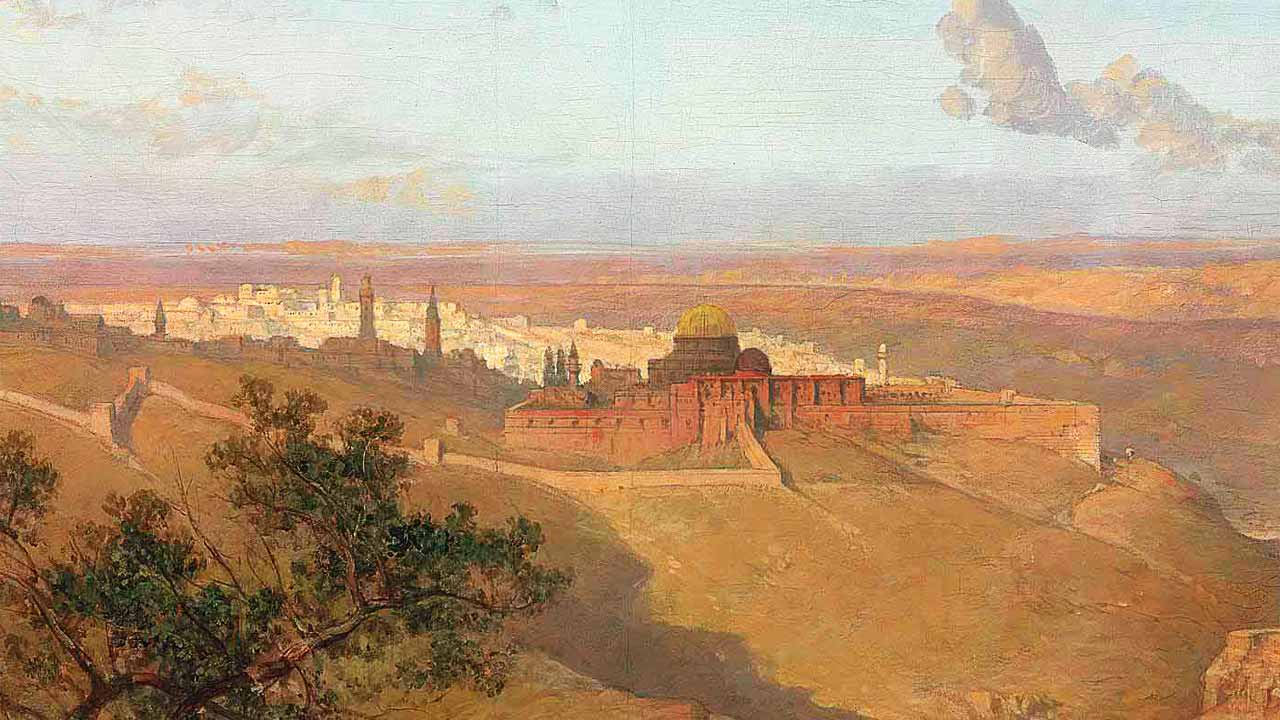Muslim Jerusalem

A FEW YEARS AFTER the death of the Prophet, peace and blessings be upon him, an army of his followers surrounded Jerusalem. The city Patriarch, Sophronius, handed over the city after a brief siege. There was only one condition; that the terms of their surrender be negotiated directly with ‘Umar ibn al-Khattab, the second Khalif of Islam.
‘Umar entered Jerusalem on foot. There was no bloodshed. There were no massacres. Those who wanted to leave were allowed to, with all their possessions. Those who wanted to stay were guaranteed protection for their lives, their property, and their places of worship. For the first time in its long history, Jerusalem had been spared a bloodbath. The year was 638 CE.
It is said that ‘Umar accompanied Sophronious to the Church of the Holy Sepulchre and that he was offered a place to pray in it. ‘Umar declined, fearing it might establish a precedent which would threaten the church’s continued use as a Christian house of worship. He prayed instead to the south of the church, now the site of the Mosque of ‘Umar in Jerusalem.
‘Umar then asked to be taken to the site of al-Aqsa Mosque. Accompanied by hundreds of Muslims, he found the area covered in dust and debris and immediately initiated its clearing. A huge timber mosque which held three thousand worshippers was erected on this site in the time of ‘Umar, at the southernmost wall of the Noble Sanctuary.
JERUSALEM BECAME KNOWN as the holy city, al-Quds. Many of the Prophet’s Companions travelled to worship at the blessed site where the Prophet Muhammad, peace and blessings be upon him, was brought by night, and from which he ascended through the heavens to his Lord. According to the authenticated tradition of the Prophet, peace and blessings be upon him, travel for the sake of worship is undertaken to only three mosques; the Sacred Mosque in Makkah, the Prophet’s Mosque in Madinah, peace and blessings be upon him, and the al-Aqsa Mosque in Jerusalem.
“There is no journey except to three mosques,
the Sacred Mosque, the Prophet’s Mosque, and Al-Aqsa Mosque”
reported by Abu Huraira
Sahih al-Bukhari /Sahih Muslim